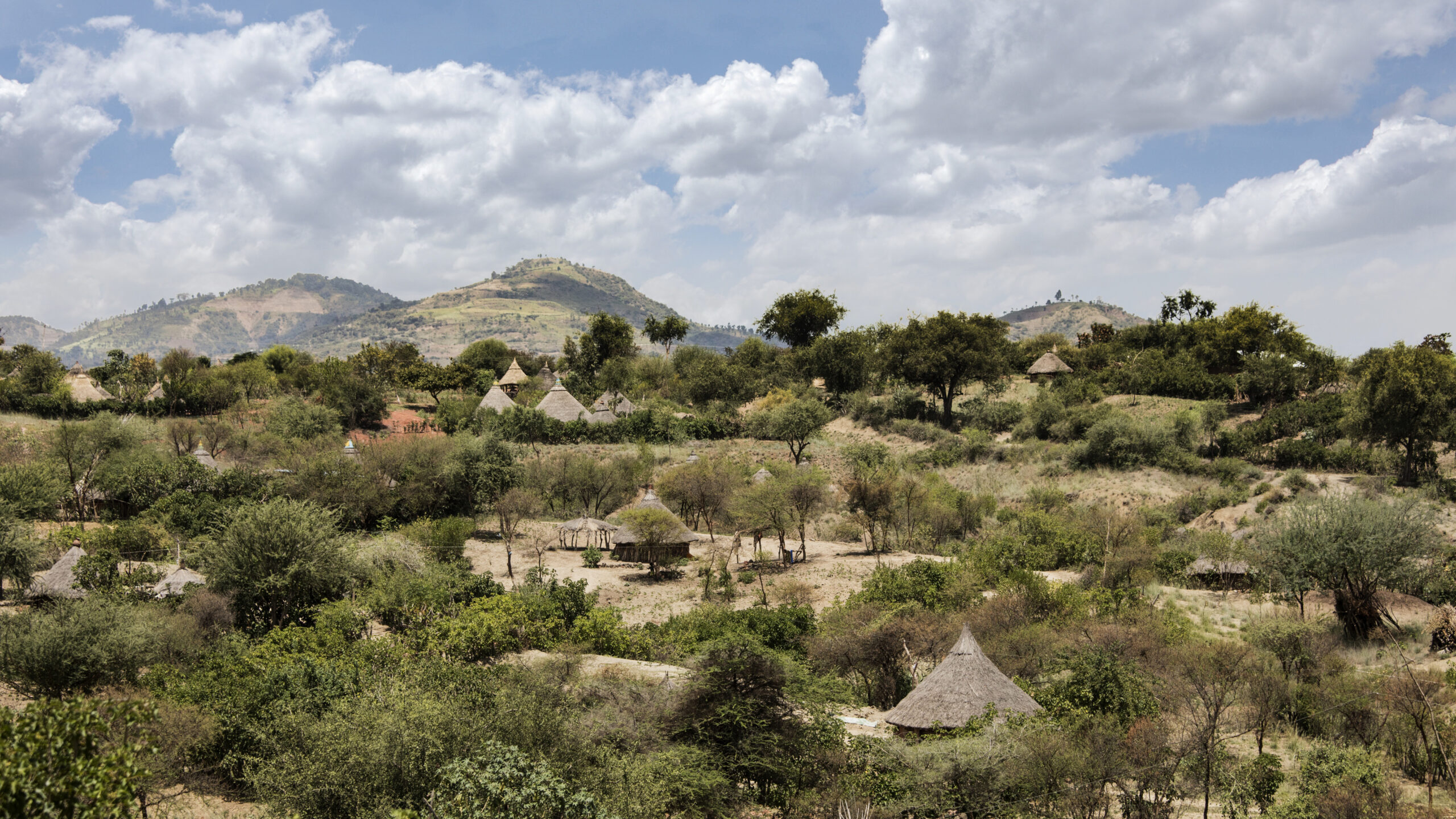Overview
Researchers
Erwin Bulte
Professor of Development Economics at Wageningen University
Goytom Abraha Kahsay
Assistant Professor at the Department of Food and Resource Economics, University of Copenhagen
Fekadu Tefera Meka
Oromia Forest and Wildlife Enterprise
- Country
- Ethiopia
- Timeline
- 11/01/2022 - 12/31/2024
- Constraints
- Land

Ethiopian landscape of grass huts and mountains in the Borana region of Ethiopia. Credit: Adobe Stock, by Wollwerth Imagery
Deforestation poses a major threat to climate stability and biodiversity worldwide. Since the 1990s, policymakers in Ethiopia have implemented community-based forest management practices (CBFM) to grant authority and administration rights to residents over their local forests. As regional efforts to expand the coverage of such forest-management systems continue, researchers are evaluating the impact of CBFM on farmers’ agricultural productivity, adoption of modern technology, rural livelihoods, and forest conservation. Results are forthcoming.
Policy Issue:
Deforestation is a critical issue across the globe, driving biodiversity loss and reducing the planet’s capacity to absorb carbon dioxide. Illegal logging and other exploitative forest activities contribute to the unsustainable use of natural resources. The illicit trade in timber and forest products is fueled by a complex mix of factors, including weak forest governance and regulation enforcement in producer countries, insufficient verification standards in consumer countries, and sustained demand for forest products.
Until recent decades, many natural woodlands in low-income countries such as Ethiopia were state-owned and effectively open-access, making them vulnerable to widespread exploitation and deforestation. In response, governments have explored using different forest management and governance systems, including community-based forest management (CBFM). These programs transfer management and extraction rights to local communities, aiming not only to conserve forests but also to create new sources of forest-based income. In turn, this income may enable smallholder farmers to invest more in their farms and boost productivity. Can community-based forestry interventions improve the livelihoods of participating smallholder farmers, while promoting forest conservation?
Context of the Evaluation:
Natural forests in Ethiopia were state-controlled and effectively open-access before the 1990s, leading to widespread illegal exploitation of resources. In Oromia regional state, home to seventy percent of Ethiopia’s woodlands, forests disappeared at a rate of three percent per year from 1950 to 1990.
Since then, the Ethiopian government has sought to curb illegal forest extraction by devolving management authority to local communities through a CBFM program. Forest user groups (FUGs) were established and granted exclusive rights to extract and trade timber and non-timber resources in areas they managed. Today, more than 1,000 FUGs collectively manage nearly 2 million hectares of forest.
Following this redistribution of power, deforestation rates fell, and local residents were able to earn forest-linked incomes. Previous research shows that families invest part of this forest-related income back into their farms, suggesting a potential pathway toward agricultural modernization. Given these positive results, the Oromia government is now interested in expanding CBFM to the entire region.
Details of the Intervention:
In partnership with the Oromia Forest and Wildlife Enterprise (OFWE), the public agency in charge of managing forests in the Oromia regional state, researchers are testing the impact of CBFM on farming techniques, rural livelihoods, and forest conservation.
As part of OFWE’s efforts to expand CBFM across the entire Oromia region in the coming years, researchers are assigning 243 villages in Oromia to one of four different groups:
- CBFM program with status quo leader selection (500 households): Villages in this group will transition to OFWE’s community-based forestry management system. Leaders of this new FUG will come from a pool of local volunteers, traditionally village elites supported by other village members.
- CBFM program with anonymized voting for leader selection (500 households): Villages in this group will transition to OFWE’s community-based forestry management system. Residents will select leaders of the new FUG anonymously.
- CBFM program with a leadership gender quota (500 households): Villages in this group will transition to OFWE’s CBFM system. OFWE will mandate that the vice-chair and at least one other member of the FUGs executive committee be women.
- Comparison group (1,000 households): Villages in this group will continue to use their traditional, business-as-usual forest management practices, serving as a comparison group.
Researchers are conducting three rounds of data collection: baseline (before the intervention starts), midline (approximately eleven months into the intervention), and an endline (2026). At midline, researchers are collecting extensive data on leadership selection mechanisms and their impact on leader quality across multiple dimensions including honesty, level of corruption, social networks, and managerial capability. The endline analysis will examine how the main outcomes, forest-based income of group members and forest conservation, are affected by different leadership selection modalities. The analysis relies on survey data, market data, satellite imagery, experts’ assessments of forest quality, and focus group discussions to elucidate the mechanism linking intervention to impacts.
Results and Policy Lessons:
Research ongoing; results forthcoming.
Related Papers Citations:
Bulte, Erwin, Goytom Abraha Kahsay, Fekadu Tefera Meka. 2022. “Communal natural resource management and agricultural transformation: The case of forest user groups in Ethiopia.”
Kahsay, G. and E. Bulte, 2021. Internal versus top-down monitoring in community resource management Experimental evidence from Ethiopia. Journal of Economic Behavior & Organization 189: 111-131
Kahsay, G., E. Bulte, F. Alpizar, L. Hansen, H. Medhin, 2023. Leadership accountability in community-based forest management: Experimental evidence in support of governmental oversight. Ecology & Society 28(4):20.